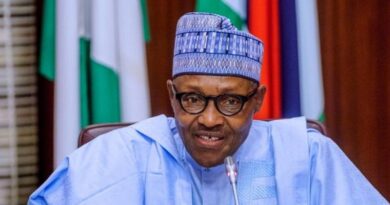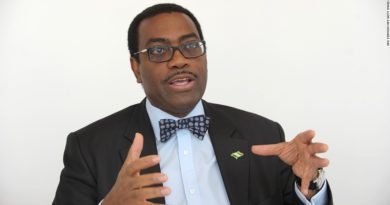Trump and the global fight against climate change
By Kayode Aboyeji
The much awaited 2016 United States (U.S) Presidential Election has come and gone, with the Republican candidate, Donald Trump, declared winner of the keenly contested election. But one of the key issues that would concern environmental players across the globe is what his administration portends for the fight against the climate change phenomenon.
Globally, U.S is the second largest greenhouse gas emitter after China, contributing 15.6 per cent of the global C02 emissions. The continuous emissions of greenhouse gas into the atmosphere since industrial revolution era and other anthropogenic activities is what is responsible for global warming and the consequent extreme weather events being experience across the globe.
In 1992, during the Earth Summit in Rio de Janeiro, the international environment treaty, the United Nations Framework Convention on Climate Change (UNFCCC) was negotiated. And it entered into force on 21 March 1994.
The objective of the convention is to stabilize greenhouse gas concentrations in the atmosphere at a level that would prevent dangerous anthropogenic interference with the climate system.
Parties to the convention have met annually from 1995 in Conference of the Parties (COP) to assess progress in leading with climate change. In 1997, the Kyoto Protocol (KP) was concluded and established legally binding obligations for developed countries to reduce their greenhouse gas emissions in the period 2008-2012.
The 2010 Cancun agreements state that future global warming should be limited to below 2.0 0C (3.6 0F) relative to the pre-industrial level. The Protocol was amended in 2012 to encompass the period 2013-2020 in the Doha Amendment.
Under the Ad Hoc Working Group on the Durban Platform for Enhanced Action (ADP), the Conference of the Parties (COP) by its decision 1/CP.19 , invited all Parties to initiate or intensify domestic preparations for their Intended Nationally Determined Contributions (INDCs) towards achieving the objective of the Convention as set out in its Article 2, without prejudice to the legal nature of the contributions. Parties were expected to communicate this to UNFCCC secretariat well advance of COP 21 in Paris, France.
The submission of the INDCs culminated in the historic Paris Agreement which was adopted by the 195 member nations in December 2015 in Paris, France.
As an Annex 1 member state, the U.S also submitted its INDC with a pledge to achieve an economy-wide target of reducing its greenhouse gas emissions by 26-28 per cent below its 2005 level in 2025 and to make best efforts to reduce its emissions by 28%.
Part of the U.S INDC submitted to the UNFCCC on 30 September 2015 read, “The United States is pleased to communicate its Intended Nationally Determined Contribution, as well as information to facilitate the clarity, transparency, and understanding of the contribution.
“The United States is strongly committed to reducing greenhouse gas pollution, thereby contributing to the objective of the Convention. In response to the request in Lima to communicate to the secretariat its intended nationally determined contribution towards achieving the objective of the Convention as set out in its Article 2—the stabilization of greenhouse gas concentrations in the atmosphere at a level that would prevent dangerous anthropogenic interference with the climate system—the United States intends to achieve an economy-wide target of reducing its greenhouse gas emissions by 26-28 per cent below its 2005 level in 2025 and to make best efforts to reduce its emissions by 28%.
“The target is fair and ambitious. The United States has already undertaken substantial policy action to reduce its emissions, taking the necessary steps to place us on a path to achieve the 2020 target of reducing emissions in the range of 17 percent below the 2005 level in 2020. Additional action to achieve the 2025 target represents a substantial acceleration of the current pace of greenhouse gas emission reductions. Achieving the 2025 target will require a further emission reduction of 9-11% beyond our 2020 target compared to the 2005 baseline and a substantial acceleration of the 2005-2020 annual pace of reduction, to 2.3-2.8 percent per year, or an approximate doubling.”
However, to further demonstrate its commitment to the Paris Agreement, the U.S on 22 April, 2016 signed the Agreement and similarly ratified it on 3 August, 2016.
But with the election of Donald Trump on Wednesday November 9, 2016 who has made it clear that he does not believe in the climate change science, the concern now is whether his presidency will toe the part of the incumbent in joining other nations to confront the climate change challenge.
Specifically, during his electioneering campaigns, Trump described the climate change science as a ‘hoax’ and also promises to push Congress to repeal Obama Clean Power plan. He plans to create jobs by relying on its fossil fuels such as oil and gas.
While Trump believes that maintaining ‘Clean air’ and ‘Clean water’ is important, he dismissed climate change science and believes environmental restrictions on businesses would make them less competitive in the global market place.
“I do not believe that we should imperil the companies within our country”, he told CNN on the issue.
Now that he has clinched the Presidency of the most powerful nation in the world, would Trump pull America out from the international climate regime? Would his concern for businesses in America supersede the interest of millions of people across the world suffering from the effects of climate change? Is he likely to consider environmental and climate change issues as a matter of urgency?
These and many more are what the global community will be looking out for when he assume office come January 20, 2017. Till then, your guess is as good as mine.
Kayode Aboyeji can be reach @kayodeaboye@yahoo.com




